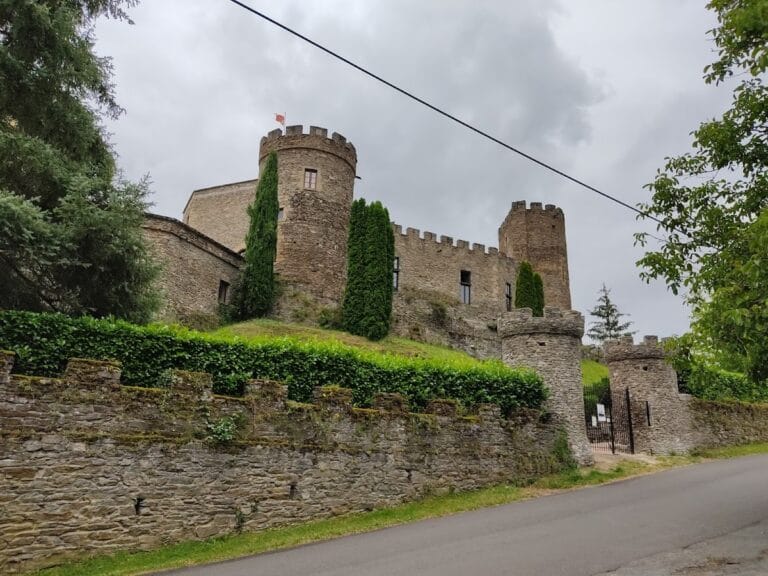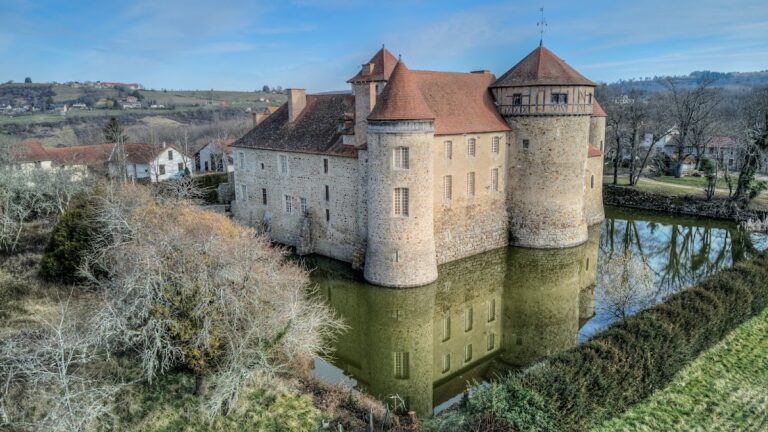Castle of Gannat: A Medieval Fortress and Museum in France
Visitor Information
Google Rating: 4
Popularity: Very Low
Google Maps: View on Google Maps
Country: France
Civilization: Medieval European
Remains: Military
History
The Castle of Gannat is located in the town of Gannat, France, and was originally built by medieval French society. This site has a history that dates back to the early 13th century, developing over several centuries in response to changing defensive and civic needs.
Initially, the castle was constructed around the year 1200 to replace an earlier fortification known as a motte-and-bailey castle. This earlier structure stood near what is now the Sainte-Croix church, where in the 19th century archaeologists uncovered the foundations of two distinct towers—one round and the other square. The castle that succeeded this was built outside the limits of the medieval town.
In 1236, the town of Gannat was granted a charter of franchises, a set of privileges and rights that encouraged development and self-governance. At that time, the town was enclosed by defensive walls, and the castle was situated just beyond the northern gate of these fortifications. Its placement outside the walls allowed it to integrate with the new town defenses, contributing to overall security.
The structure that is most visible today mainly originates from the 14th century when it was under the ownership of the Lords of Bourbon, a notable noble family. Over the following centuries, the castle’s military and residential roles declined. By the 16th century, it had fallen into disuse and become unfit for habitation. In 1566, much of the castle was deliberately dismantled.
After centuries of decline, the castle found new purpose from 1833 until the early 1900s as a prison. This adaptation reused the medieval spaces to house inmates, reflecting a shift from military stronghold to civic institution. Recognizing its historical value, the French Ministry of Culture listed the castle as a monument historique in 1926, ensuring its protection and preservation.
Today, the castle serves as the Musée Yves Machelon, a museum that preserves and exhibits objects representing local history spanning from the 12th to the 18th centuries. The collection includes medieval parchments, a 17th-century ivory crucifix, wrought iron dating back to the 12th century, and a Gospel book featuring a binding from the 10th century. The museum also presents displays illustrating regional crafts and the history of the French Resistance during World War II.
Remains
The Castle of Gannat is built on a square plan with one round tower at each corner, creating a fortified enclosure connected by high, crenellated walls. These walls are topped with battlements featuring openings for defenders to shoot through, and each tower includes machicolations—stone openings projecting from the parapet allowing defenders to drop objects or pour substances on attackers directly below.
Originally, the castle was surrounded by a moat filled with water, adding a defensive barrier between the fortress and the surrounding land. Positioned just outside the northern gate of the town’s protective walls, the castle was strategically placed to monitor and guard entry points. Over time, as the town expanded, the moat was filled in, and the castle became fully integrated into the town center.
On the eastern wall of the castle, there are remains of a fireplace and two vaulted bays. Vaulted bays refer to arched recesses or openings often used as windows or doors, supported by barrel vaults—a semi-cylindrical structure typical in medieval masonry—indicating parts of the castle’s interior living or service spaces. The fireplace fragment suggests domestic use within the fortress, providing heat and a place to cook.
Though partially dismantled during the 16th century, much of the main 14th-century structure remains standing, allowing visitors to appreciate its layout and defensive features. The medieval prison once operated within the castle left behind apartments and cells, now repurposed to serve as exhibition spaces for the local history museum housed there.
Archaeological discoveries near the castle, notably the foundations of earlier towers beneath or close to the site of the former motte-and-bailey, connect the fortress to an even older defensive system, demonstrating continuity of settlement and military architecture in the area. These foundations include the bases of one round and one square tower, confirming the presence of a complex earlier fortification.
Overall, the castle retains significant elements of its medieval character, illustrating its evolution from a fortified residence and military installation to a civic institution and cultural heritage site.





